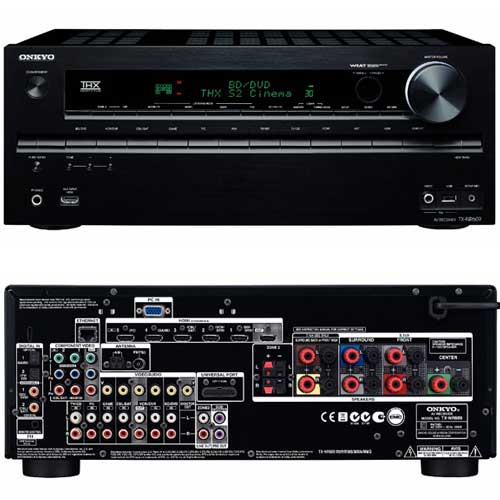AV Receivers De-Coded…A guide to AV surround-sound receivers
The world of Home Cinema is forever growing. So much so, new and more advanced ways are becoming more and more available. The AV receiver is designed to be the HDMI amplifier and the recipient of all you external players, like DVD, Blu-ray or set-top boxes. Then, with digital soundtracks being coded with surround sound capabilities and codecs, it will decipher the codec messages to then reproduce surround sound audio. On top of this, the AV receiver will allow for reception of both AM and FM radio. However, in a world of constantly evolving technology, the AV receiver is becoming more and more technically advanced. This is where it can all be a little bit confusing. ‘What is 5.1, 7.1 or even 10.1? What is Dolby Pro-logic or DTS? In fact, what is surround sound altogether?’ Well, not to worry. This guide should hopefully help.
As movies have been available to buy on DVD and Blu-ray, their soundtracks have become much more than just standard mono or stereo. In fact, they’ve allowed is to enjoy the fun of the cinema from the comfort of our own homes. This is because films are now written to the discs with the surround sound track encoded as messages onto the discs. When an AV receiver receives them they are decoded into audio. The idea is to get all the fun sound effects into the living room, bringing the movie to life. With surround speaker packages becoming cheaper to buy, and AV receivers too, it worth trying to experience the sensation of surround sound in all of its glory.
Instead of the standard stereo output from your Blu-ray player, high definition surround signals are passed through either a HDMI cable or a digital audio optical lead as coded audio messages. The receiver will decode them on arrival and turn them into an audio impulse. Dolby and DTS have various coding modules, known as codecs, which suit various movies. Many films are either formatted with Dolby True HD surround or DTS HD Master Audio surround codecs. The AV receiver is the hub of receiving and distributing as it’s both an amplifier and a decipherer.
Choosing loudspeakers can be a very long task. However, we have provided an article for this on the Hifi Gear blog. Even when you have your speakers, set-up remains a tricky task too. Good quality cables with banana plugs for protection are an essential. Many AV receivers come with a microphone which sits in the room’s centre and then determines the room’s dynamics, allowing the system to become adjusted to its own surroundings. Then, if you wish to add your CD players and other separate’s, a Pure Direct function allows you to connect equipment purely for two-channel audio reproduction, disabling the decoding circuitry from the outputs stages of the AV receiver.
In terms of connection, we personally feel that uprated interconnects and HDMI leads make a fantastic improvement in performance over the manufacturer’s provided cables. We offer a great range of interconnects and speaker cable, designed to meet all budgets and to all increase performance, reducing interference and harsh signal pollutants in the process.
For those wondering what 5.1, 7.1 or even what 10.1 is - it is simpler than it first appears. On a disc cover, it should say what audio codecs are used, followed by any of the above ratios. The first number signifies the quantity of speakers in the set-up, whilst the following decimated number signifies an active subwoofer audio channel too. The ratio terms are also used to define speaker packages too that are designated for Home Cinema applications.
For more information, please contact us at Hifi Gear. We are always ready and waiting to help wherever we possibly can.
Tom Parker
Sales and Website Admin
